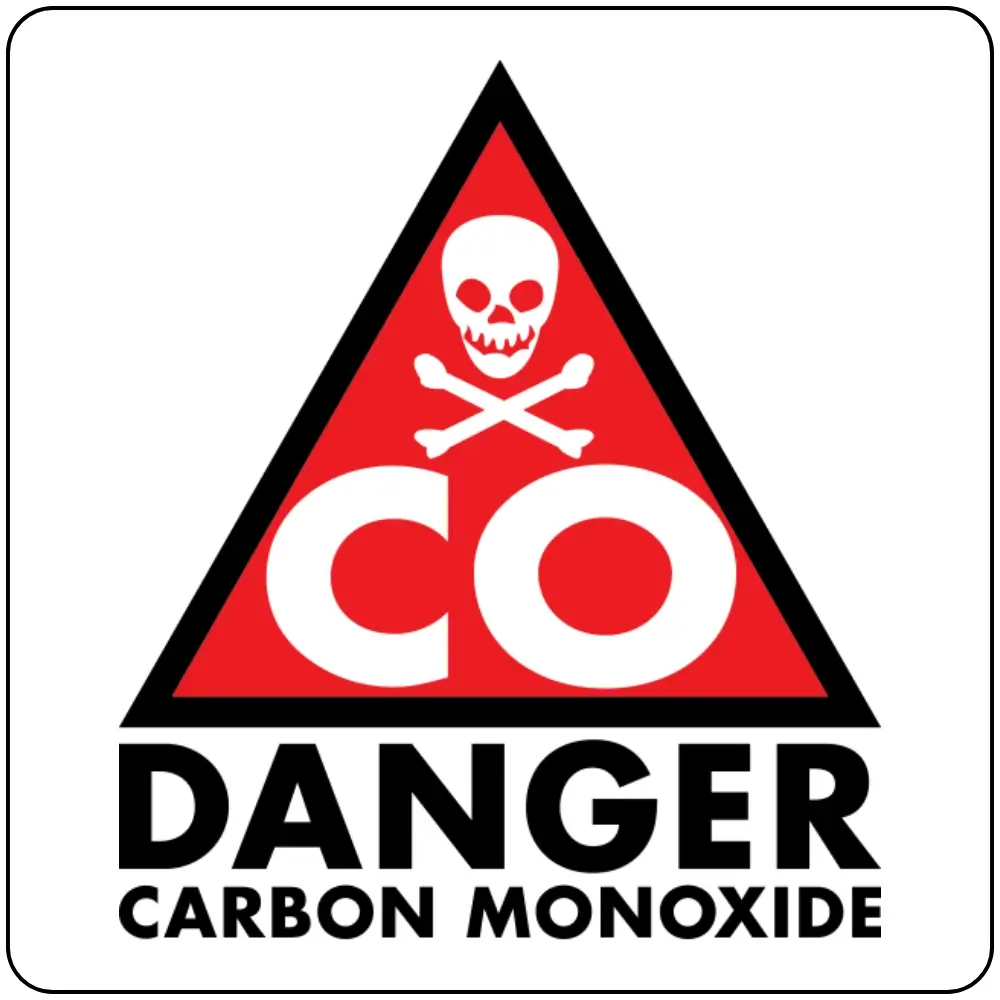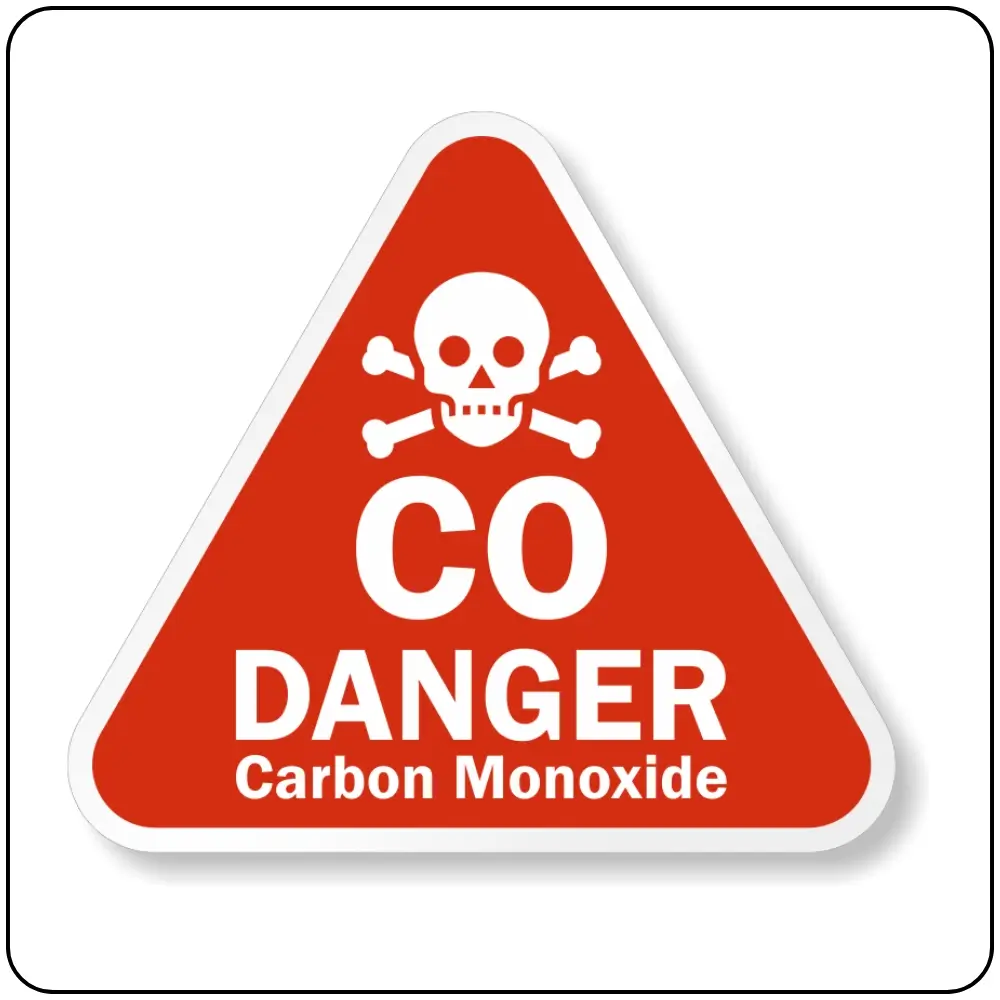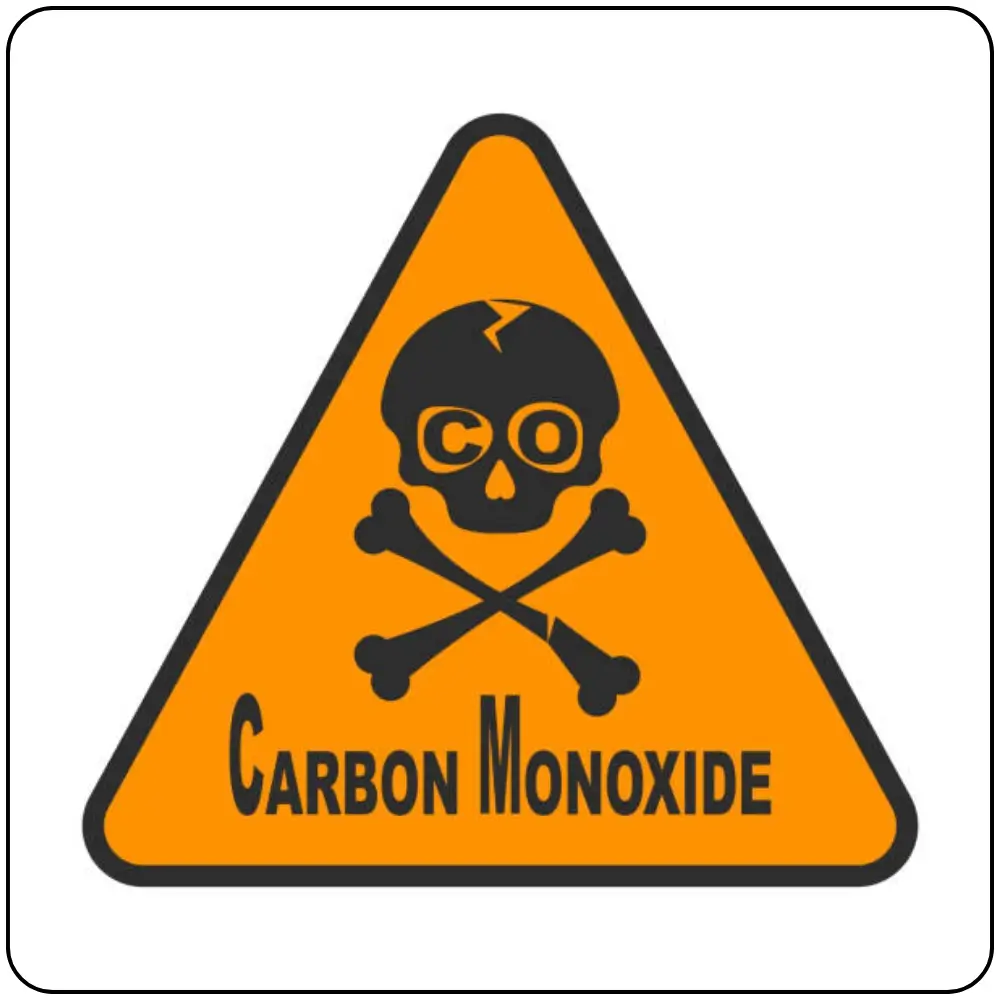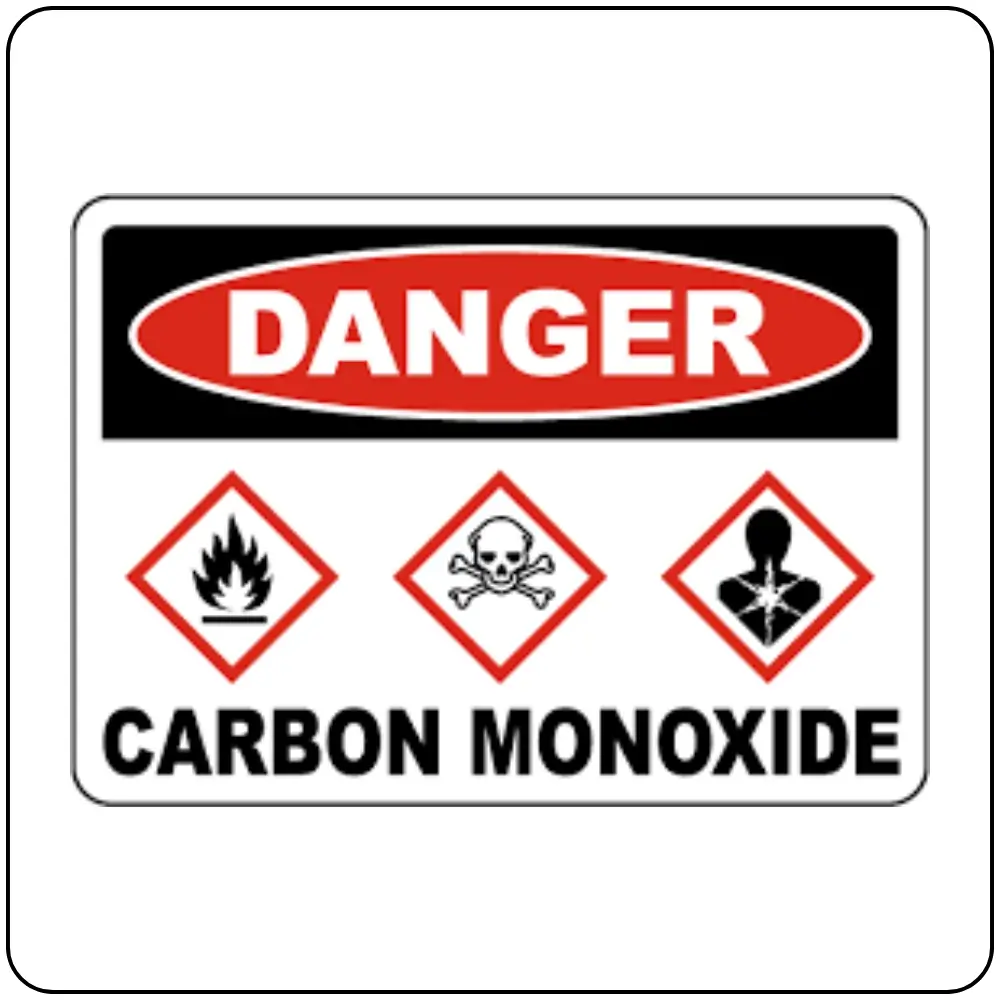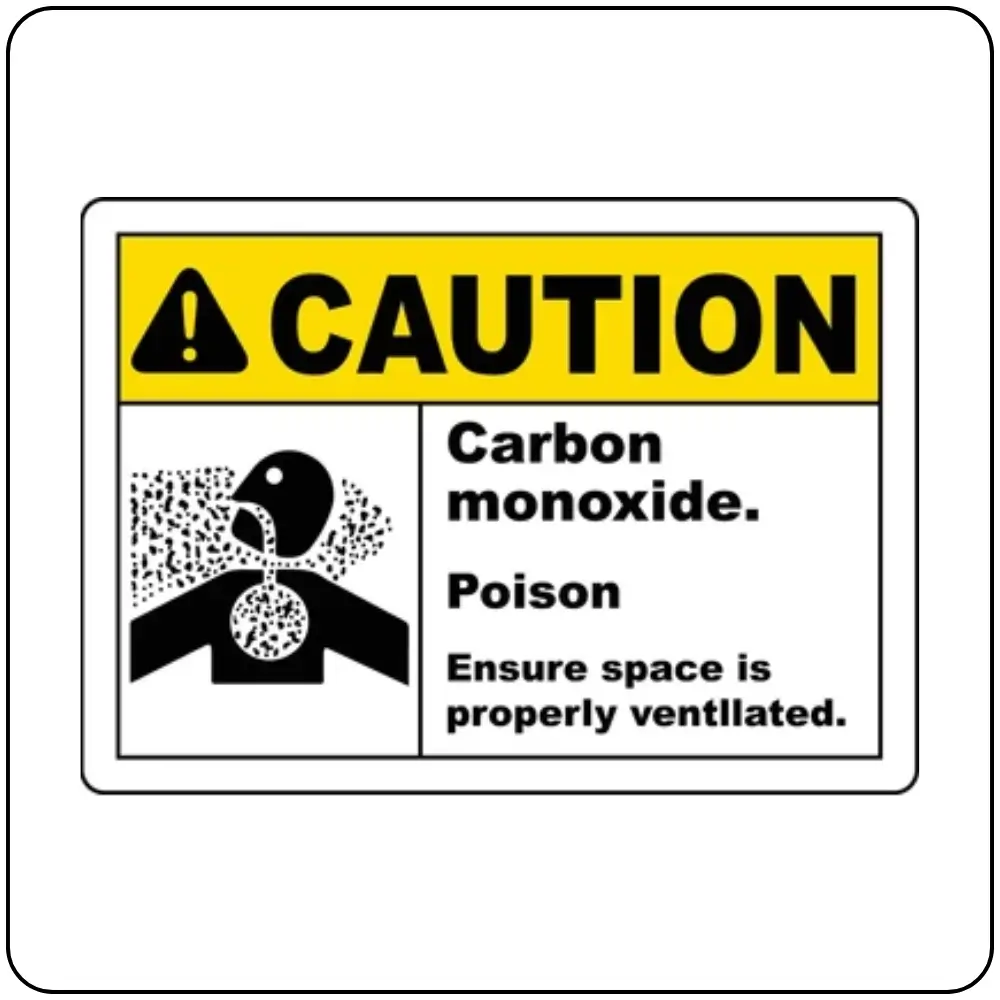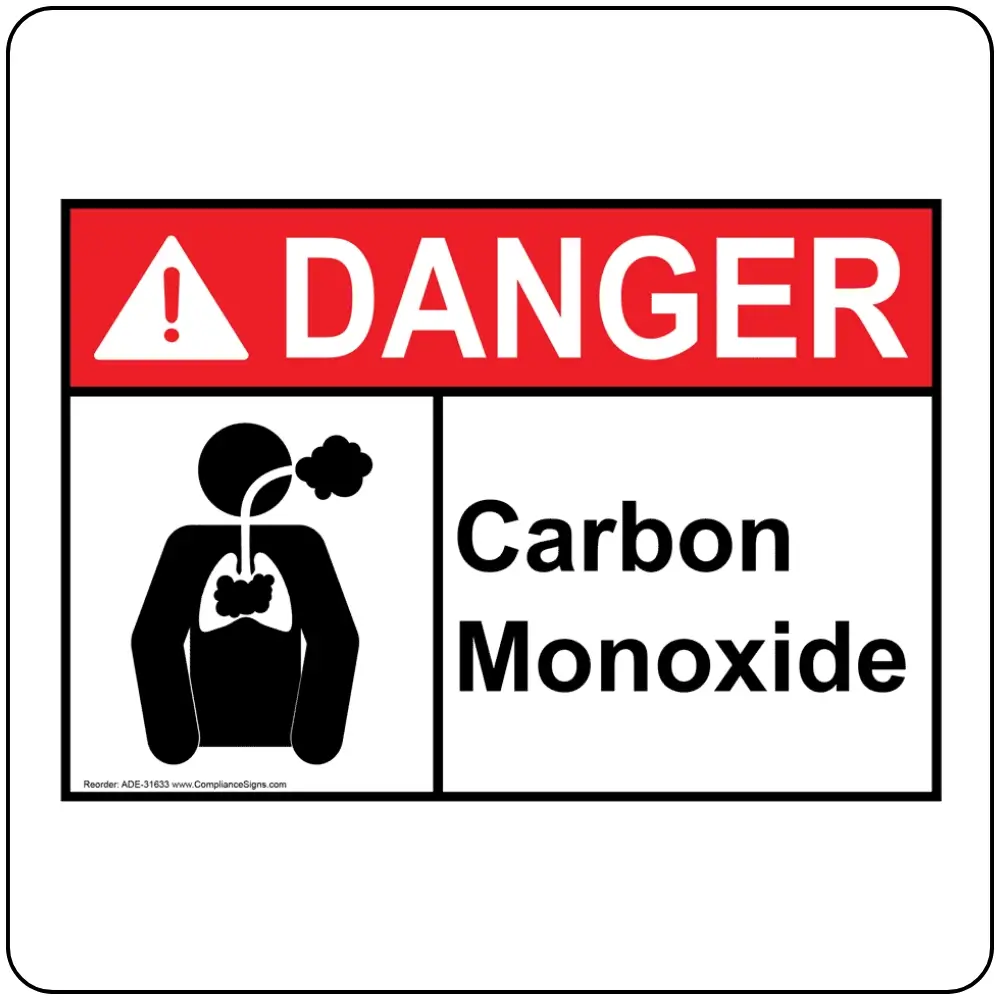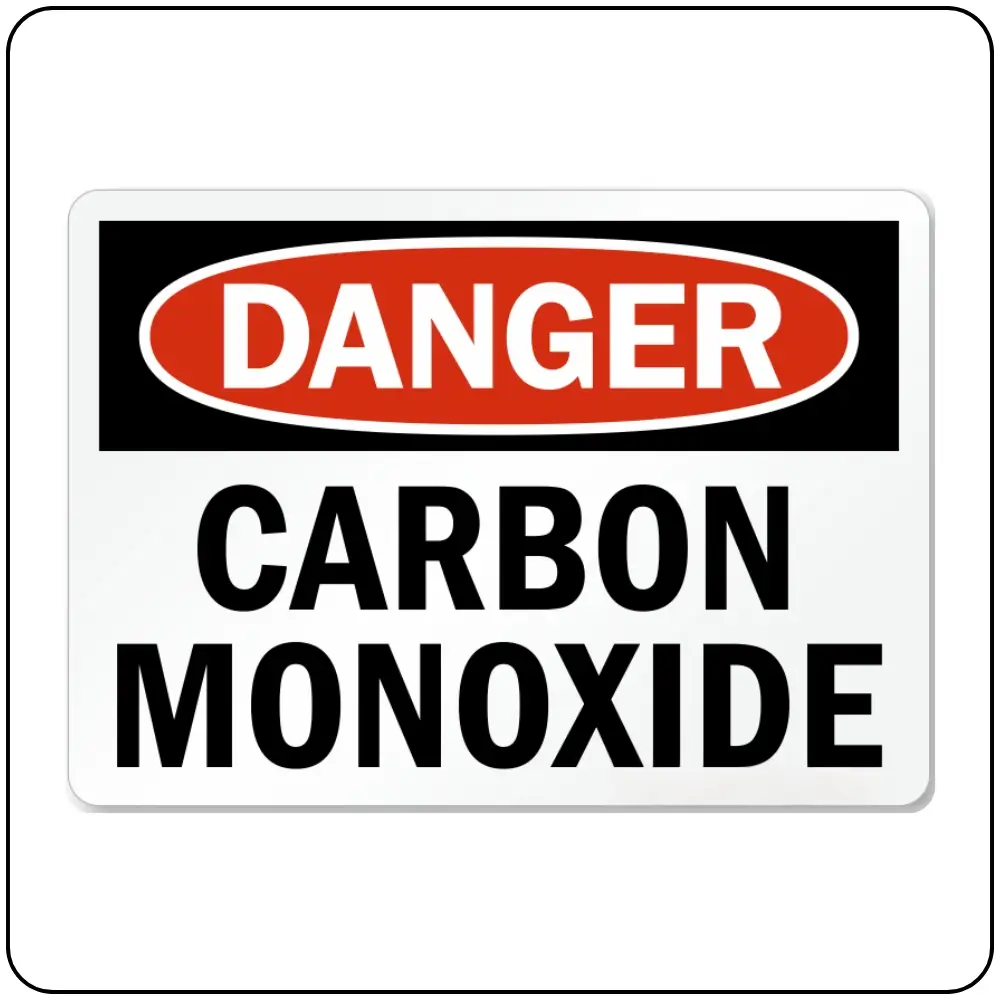Carbon monoxide (CO) is a dangerous, colorless, and odorless gas often called the “silent killer” due to its undetectable nature without proper detection tools. It is produced by the incomplete combustion of carbon-based fuels such as gasoline, wood, coal, and natural gas, making it a common hazard in homes, workplaces, and outdoor environments.
This article provides an in-depth understanding of carbon monoxide, covering its chemical properties, sources, warning signs, health effects, and preventive measures. By recognizing potential CO risks and implementing safety precautions such as installing carbon monoxide detectors and ensuring proper ventilation, individuals can effectively protect themselves and their families from CO poisoning.

What Is Carbon Monoxide (CO)?
Carbon monoxide (CO) is a highly toxic gas produced by the incomplete combustion of carbon-based fuels like gasoline, wood, coal, and natural gas. Unlike carbon dioxide (CO₂), which has two oxygen atoms, CO has only one, making it more reactive and hazardous to human health.
Chemical Properties of Carbon Monoxide
- Chemical formula: CO
- Molar mass: 28.01 g/mol
- Density: Slightly less than air (~0.967 times the density of air)
- Boiling point: -191.5°C (-312.7°F)
- Melting point: -205.1°C (-337.2°F)
- Solubility in water: Slightly soluble
CO is a flammable gas that can form explosive mixtures with air. It has a high affinity for hemoglobin in the blood, making it extremely dangerous when inhaled.

Common Sources of Carbon Monoxide
Carbon monoxide (CO) is produced when carbon-based fuels burn incompletely due to insufficient oxygen. This toxic gas can accumulate in enclosed spaces, leading to serious health risks. Below are some of the most common sources of carbon monoxide in both outdoor and indoor environments.
Outdoor Sources of Carbon Monoxide
CO is widely present in outdoor air, especially in urban areas with heavy traffic and industrial activities. The major outdoor sources include:
1. Vehicle Exhaust
Motor vehicles, including cars, trucks, motorcycles, and buses, generate carbon monoxide when burning gasoline or diesel fuel. Idling a vehicle in an enclosed or poorly ventilated space, such as a garage, can result in dangerous levels of CO accumulation.
2. Industrial Processes
Factories, power plants, and refineries that rely on fossil fuels such as coal, oil, and natural gas release carbon monoxide as a byproduct. Workers in these environments are at a higher risk of exposure, especially in areas with inadequate ventilation.
3. Wildfires and Open Burning
Wildfires, controlled burns, and the combustion of organic materials release significant amounts of carbon monoxide into the atmosphere. Extended exposure to smoke increases the risk of CO poisoning, particularly for firefighters and individuals in affected areas.
4. Construction Equipment and Machinery
Heavy-duty machinery, including bulldozers, forklifts, concrete saws, and pressure washers, often run on gasoline or diesel and emit carbon monoxide. Poor ventilation on construction sites or indoor workspaces can lead to harmful CO buildup.
Indoor Sources of Carbon Monoxide
Indoor environments can pose a greater CO poisoning risk, especially when appliances are not properly maintained or ventilated.
1. Gas-Powered Home Appliances
Furnaces, water heaters, boilers, and gas stoves that use natural gas, propane, or oil can produce carbon monoxide if they are not properly maintained or vented. Cracked heat exchangers, blocked flues, or malfunctioning burners may lead to CO leaks inside the home.
2. Fireplaces and Wood Stoves
Fireplaces and wood stoves can be a source of carbon monoxide, particularly if they are not well-ventilated. Blocked chimneys or closed flue dampers prevent proper airflow, allowing CO to accumulate indoors.
3. Portable Generators and Space Heaters
Gasoline, propane, or kerosene-powered generators and space heaters can produce high levels of CO. Using these devices indoors or in enclosed areas without sufficient ventilation poses a serious risk.
4. Tobacco Smoke
Cigarettes, cigars, and hookahs release carbon monoxide into the air. Prolonged exposure to high concentrations of CO in enclosed spaces can contribute to negative health effects, especially for individuals who smoke regularly or are exposed to secondhand smoke.
5. Attached Garages
Running a vehicle inside an attached garage, even with the door open, can allow carbon monoxide to seep into the home. In colder climates, snow-blocked exhaust pipes can cause CO to back up into a vehicle, increasing the risk of poisoning.
6. Charcoal and Gas Grills
Using charcoal grills, propane stoves, or other outdoor cooking appliances indoors can lead to dangerous carbon monoxide buildup. These devices should always be used in open-air environments with proper ventilation.
Unusual Sources of Carbon Monoxide
Certain sources of CO exposure may not be immediately obvious.
- Boat Engines: Running a boat engine in enclosed cabins or near swimmers can lead to carbon monoxide poisoning.
- Incense and Candles: Burning incense or multiple candles in an area with poor ventilation can increase CO levels.
- Blocked Dryer Vents: A clogged vent in a gas-powered clothes dryer can prevent proper exhaust flow, causing carbon monoxide to accumulate.
- Gas-Powered Tools: Lawn mowers, chainsaws, leaf blowers, and snowblowers produce CO, particularly when used in enclosed spaces such as sheds or garages.
Reducing the Risk of Carbon Monoxide Exposure
To prevent carbon monoxide buildup and exposure, several safety measures should be followed:
- Ensure that all fuel-burning appliances and heating systems are properly vented and regularly maintained.
- Install carbon monoxide detectors in key areas of the home, especially near bedrooms and appliances.
- Avoid using outdoor appliances such as charcoal grills and generators indoors.
- Never run a vehicle inside an enclosed garage, even if the garage door is open.
- Keep chimneys and flues clean and clear of obstructions to allow for proper airflow.
By understanding and addressing the common sources of carbon monoxide, individuals can take proactive steps to protect themselves and their families from its harmful effects. Awareness and regular maintenance are essential in preventing CO poisoning in both residential and occupational settings.

The Dangers and Health Effects of Carbon Monoxide Exposure
Carbon monoxide (CO) is a highly toxic gas that can pose severe health risks when inhaled. Since it is colorless, odorless, and tasteless, it often goes undetected, making it one of the leading causes of accidental poisoning worldwide. The severity of its effects depends on the concentration of CO in the air, the duration of exposure, and the individual’s health condition.
How Carbon Monoxide Affects the Body
Carbon monoxide interferes with the body’s ability to transport oxygen by binding to hemoglobin in red blood cells. This forms carboxyhemoglobin (COHb), which reduces the amount of oxygen that can be delivered to tissues and organs. Because CO has an affinity for hemoglobin that is approximately 245 times stronger than oxygen, even low levels of exposure can have serious consequences.
Additionally, CO poisoning shifts the oxygen-hemoglobin dissociation curve to the left, meaning that oxygen is less likely to be released into tissues. This exacerbates oxygen deprivation, leading to hypoxia (oxygen deficiency), which can affect vital organs, particularly the brain and heart.
Health Effects of Carbon Monoxide Exposure
Short-Term (Acute) Effects of CO Exposure
Acute carbon monoxide poisoning occurs when an individual is exposed to high concentrations of CO over a short period. Symptoms often resemble the flu but without a fever, making CO poisoning difficult to diagnose.
Mild to Moderate Exposure (10-30% Carboxyhemoglobin Level)
- Headache
- Dizziness
- Fatigue
- Nausea
- Shortness of breath
- Confusion
- Weakness
Severe Exposure (30-60% Carboxyhemoglobin Level)
- Impaired coordination
- Chest pain, especially in individuals with heart disease
- Blurred vision
- Vomiting
- Fainting or syncope
Life-Threatening Exposure (>60% Carboxyhemoglobin Level)
- Seizures
- Respiratory failure
- Loss of consciousness
- Coma
- Death
The rapid onset of severe symptoms can be particularly dangerous for people who are asleep, intoxicated, or otherwise unable to recognize the warning signs of CO poisoning.
Long-Term (Chronic) Effects of CO Exposure
Repeated or prolonged exposure to lower levels of carbon monoxide can have lasting health effects, particularly on the nervous and cardiovascular systems.
Neurological Effects
- Memory loss
- Difficulty concentrating
- Mood changes (irritability, depression, anxiety)
- Sleep disturbances
- Impaired motor function
- Chronic headaches
Some individuals who survive severe CO poisoning experience delayed neuropsychiatric symptoms (DNS), which can appear days or even weeks after exposure. These symptoms may include cognitive impairments, personality changes, and movement disorders similar to Parkinson’s disease.
Cardiovascular Effects
- Increased risk of heart attacks (myocardial infarction)
- Reduced exercise tolerance
- Worsening of existing heart conditions
- Long-term damage to blood vessels
Individuals with pre-existing heart conditions are particularly vulnerable, as CO exposure increases the workload on the heart by reducing oxygen supply.
Fetal and Infant Risks
- Carbon monoxide easily crosses the placenta, exposing the developing fetus to oxygen deprivation.
- Increased risk of birth defects, low birth weight, premature birth, and stillbirth.
- Newborns and young children are more susceptible because their bodies absorb CO more quickly than adults.
Who Is Most at Risk?
While CO poisoning can affect anyone, certain groups are more vulnerable to its harmful effects:
- Unborn babies (fetal blood cells absorb CO more readily than adult cells)
- Infants and young children (higher respiratory rates lead to increased CO absorption)
- Elderly individuals (reduced ability to compensate for oxygen deprivation)
- People with heart disease (reduced oxygen supply can worsen symptoms of angina or heart failure)
- Individuals with respiratory conditions (such as asthma or chronic obstructive pulmonary disease)
Carbon monoxide exposure is a serious and potentially life-threatening hazard that requires vigilance to prevent. Because CO is undetectable by human senses, installing CO detectors, maintaining fuel-burning appliances, and ensuring adequate ventilation are essential safety measures. Understanding the symptoms and health effects of CO exposure can help individuals recognize early warning signs and take swift action to protect themselves and their families.

Warning Signs of Carbon Monoxide in Your Home
Carbon monoxide (CO) is a silent but deadly gas because it has no color, taste, or smell. Without proper detection, it can accumulate indoors and pose a serious health risk. Since human senses cannot detect CO, it is crucial to recognize indirect warning signs that may indicate the presence of this toxic gas in your home.
1. Physical Symptoms of CO Exposure
One of the earliest warning signs of carbon monoxide buildup is the onset of health symptoms among people in the household. These symptoms often resemble the flu but without fever. If multiple people experience similar symptoms, especially in a specific location, CO exposure should be suspected.
Mild to Moderate Symptoms:
- Persistent headaches
- Dizziness or confusion
- Nausea or vomiting
- Shortness of breath
- Fatigue or weakness
- Chest pain (especially in people with heart conditions)
Severe Symptoms (Require Immediate Medical Attention):
- Blurred vision
- Loss of muscle coordination
- Unexplained fainting
- Seizures
- Loss of consciousness
- Respiratory failure or death in extreme cases
A key indicator is that symptoms improve when leaving the home and return upon re-entering, suggesting a possible carbon monoxide leak.
2. Unusual Appliance Behavior and Household Signs
Fuel-burning appliances that are malfunctioning or poorly ventilated can produce excessive CO. Watch for these warning signs:
Changes in Flames or Appliance Function:
- Yellow or orange flames in gas stoves or burners (instead of a steady blue flame)
- Flickering pilot lights or pilot lights that frequently go out
- Soot buildup or black/brown stains near fuel-burning appliances
- A burning smell or smoke coming from appliances (although CO itself is odorless, other combustion byproducts may be detectable)
Excess Moisture or Condensation:
- Unusual condensation buildup on windows or walls, especially near fuel-burning appliances
- Excess moisture may indicate poor ventilation, leading to CO accumulation
Ventilation Issues and Air Quality Changes:
- Stuffy or stale air in rooms where fuel-burning appliances are used
- Unusual smells coming from gas appliances (even though CO is odorless, associated fumes may be noticeable)
- Chimneys, vents, or flues that appear blocked or have visible soot deposits
3. Symptoms in Pets
Pets are more vulnerable to CO poisoning because they have smaller bodies and breathe more rapidly than humans. If your pets exhibit unusual behavior, it could be an early warning sign of CO exposure.
Signs of CO Poisoning in Pets:
- Unexplained lethargy or weakness
- Difficulty breathing or rapid breathing
- Vomiting or loss of appetite
- Disorientation or trouble walking
- Unusual whining, barking, or distress
If pets appear sick while indoors but recover when taken outside, this may indicate a carbon monoxide issue inside the home.
4. Alarm Activation from a CO Detector
A properly functioning carbon monoxide detector is the most reliable way to identify CO buildup. If a CO alarm goes off:
- Do not ignore it or assume it is a false alarm.
- Evacuate all occupants immediately and move to fresh air.
- Call emergency services or a qualified technician to inspect the home.
- Do not re-enter the home until it has been cleared for safety.
It is important to install CO detectors on every level of the home, especially near bedrooms, and to test them regularly.
5. Recent Changes That Could Increase CO Risk
Certain actions or home modifications can contribute to CO buildup. If you have recently done any of the following, be extra cautious:
- Installed a new fuel-burning appliance without proper ventilation
- Blocked or sealed off vents, chimneys, or exhaust systems
- Used a portable generator, grill, or outdoor appliance indoors
- Started using a fireplace or furnace that hasn’t been inspected in years
Any of these changes can increase the risk of CO exposure and should be addressed immediately.
Preventing CO Buildup and Ensuring Safety
To reduce the risk of carbon monoxide in your home:
- Install CO detectors near sleeping areas and fuel-burning appliances
- Have fuel-burning appliances serviced annually by a qualified technician
- Ensure proper ventilation for stoves, fireplaces, and heaters
- Never use outdoor appliances indoors (grills, generators, kerosene heaters)
- Do not idle vehicles in an attached garage, even with the door open
- Check chimneys and vents regularly for blockages or damage
Recognizing these warning signs and taking preventive measures can help protect you and your family from the dangers of carbon monoxide poisoning.
Carbon Monoxide Symbol Signs
Carbon monoxide (CO) is a colorless, odorless, and tasteless gas that poses significant health risks due to its toxicity. To alert individuals to its presence and potential dangers, various standardized signs and symbols are used in environments where CO exposure is possible. Common Carbon Monoxide Warning Signs:
OSHA Danger Sign:
- Design: Features the word “DANGER” in white letters on a red background, accompanied by the text “CARBON MONOXIDE” below.
- Symbol: Often includes a pictogram of a skull and crossbones to signify the poisonous nature of CO.
- Usage: Utilized in areas with a high risk of CO exposure to warn individuals of immediate hazards.
Caution Sign:
- Design: Displays the word “CAUTION” in black letters on a yellow background, followed by the message “CARBON MONOXIDE MAY BE PRESENT.”
- Symbol: May include an exclamation mark within a triangle, indicating a need for caution.
- Usage: Placed in areas where CO might be present under certain conditions, advising individuals to be cautious.
Warning Sign:
- Design: Shows the word “WARNING” in black letters on an orange background, with additional information such as “CARBON MONOXIDE HAZARD.”
- Symbol: May feature a general warning symbol, such as an exclamation mark within a triangle.
- Usage: Used to indicate potential CO hazards that could cause serious injury or illness if not avoided.
Importance of Recognizing CO Warning Signs:
Understanding and recognizing these signs are crucial for safety in environments with possible carbon monoxide exposure. Regular maintenance of fuel-burning appliances, proper ventilation, and installing CO detectors are essential preventive measures. In workplaces, adherence to Occupational Safety and Health Administration (OSHA) standards ensures that appropriate signage is in place to warn employees and visitors of CO hazards.
Final Thoughts: Stay Safe from Carbon Monoxide
Carbon monoxide is a deadly gas that requires vigilance to detect and prevent. Installing CO detectors, maintaining appliances, and ensuring proper ventilation are simple yet effective ways to protect yourself and your loved ones. By staying informed, you can prevent CO poisoning and create a safer living environment.
Remember: If your CO alarm goes off, evacuate immediately and call emergency services. Never ignore the warning signs of CO exposure!



